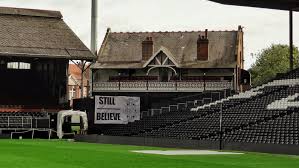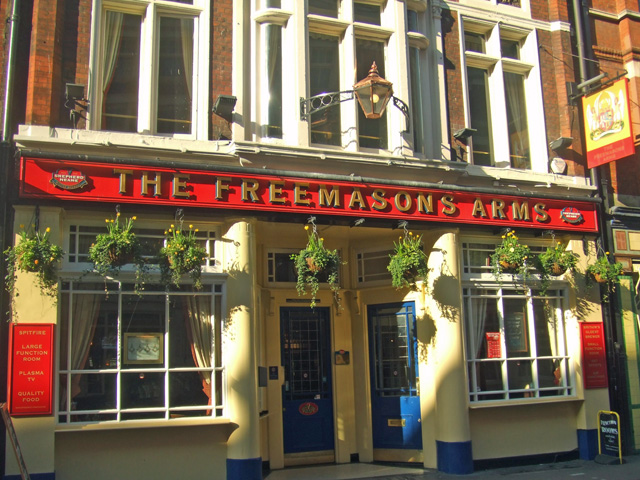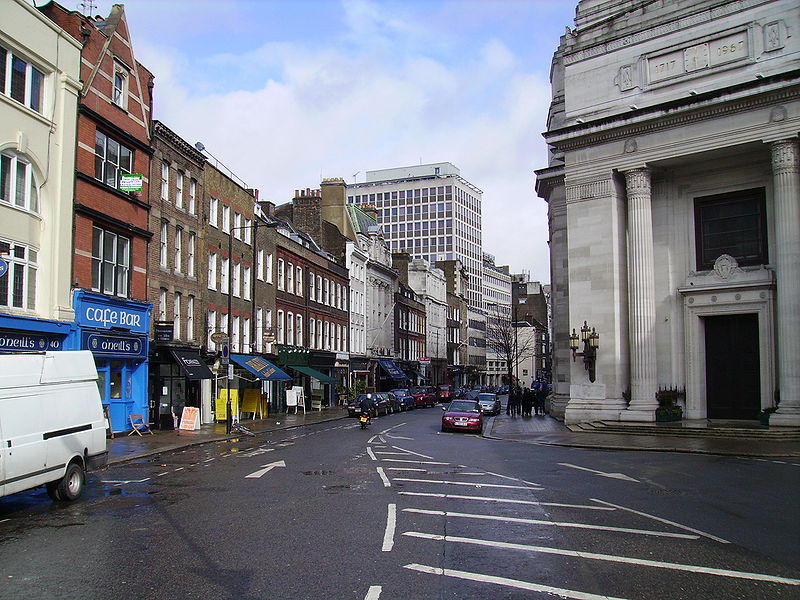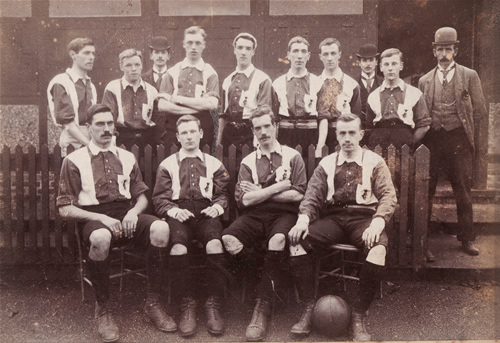Football is the most popular sport, both in terms of participants and spectators, in London.
London has several of England's leading football clubs, and the city is home to thirteen professional teams and more than 80 amateur leagues regulated by the London Football Association.Most London clubs are named after the district in which they play or used to play.
London has several of England's leading football clubs, and the city is home to thirteen professional teams and more than 80 amateur leagues regulated by the London Football Association.Most London clubs are named after the district in which they play or used to play.
Fulham is London's oldest club still playing professionally, having been founded in 1879. Royal Arsenal were London's first team to turn professional in 1891. Arsenal, Chelsea and Tottenham Hotspur are London's most successful teams in domestic and European competitions. Between them, they've won a total of 84 titles and trophies. Tottenham Hotspur were the first club in Britain to win a European trophy, winning the Cup Winners Cup in 1963.
Royal Arsenal were London's first team to turn professional in 1891. Arsenal, Chelsea and Tottenham Hotspur are London's most successful teams in domestic and European competitions. Between them, they've won a total of 84 titles and trophies. Tottenham Hotspur were the first club in Britain to win a European trophy, winning the Cup Winners Cup in 1963.
Wembley Stadium, England's national stadium is in London. It is the home venue of the England national football team and has traditionally hosted the FA Cup Final since 1923.
On 19 May 2012, Chelsea became the first London club to become European champions in the modern era after winning the 2011-12 UEFA Champions League.
The playing of team ball games (almost certainly including football) was first recorded in London by William FitzStephen around 1174-1183. He described the activities of London youths during the annual festival of Shrove Tuesday.
- After lunch all of the city's youth would go out into the fields to take part in a ball game. The students of each school have their own ball; the workers from each city craft are also carrying their balls. Older citizens, fathers, and the wealthy would come on horseback to watch their juniors competing, and to relive their own youth vicariously: you can see their inner passions aroused as they watch the action and get caught up in the fun being had by the carefree adolescents.
The playing of some form of football in London has been well documented since its creation in 1314. Regular references to the game occurred throughout the fourteenth and fifteenth centuries, including the first reference to word "football" in English when it was outlawed by King Henry IV of England in 1409. Early games were probably disorganised and violent. In the sixteenth century, the headmaster ofSt Paul's School Richard Mulcaster is credited with taking mob football and transforming it into organised and refereed team football. In 1581 he described in English his game of football, which included smaller teams, referees, set positions and even a coach.
Early games were probably disorganised and violent. In the sixteenth century, the headmaster ofSt Paul's School Richard Mulcaster is credited with taking mob football and transforming it into organised and refereed team football. In 1581 he described in English his game of football, which included smaller teams, referees, set positions and even a coach.
 Early games were probably disorganised and violent. In the sixteenth century, the headmaster ofSt Paul's School Richard Mulcaster is credited with taking mob football and transforming it into organised and refereed team football. In 1581 he described in English his game of football, which included smaller teams, referees, set positions and even a coach.
Early games were probably disorganised and violent. In the sixteenth century, the headmaster ofSt Paul's School Richard Mulcaster is credited with taking mob football and transforming it into organised and refereed team football. In 1581 he described in English his game of football, which included smaller teams, referees, set positions and even a coach.
The modern game of football was first codified in 1863 in London and subsequently spread worldwide. Key to the establishment of the modern game was LondonerEbenezer Cobb Morley who was a founding member of the Football Association, the oldest football organisation in the world. Morley wrote to Bell's Life newspaper proposing a governing body for football which led directly to the first meeting at theFreemasons' Tavern in central London of the FA. He wrote the first set of rules of true modern football at his house in Barnes.
in central London of the FA. He wrote the first set of rules of true modern football at his house in Barnes.  The modern passing game was invented in London in the early 1870s by the Royal Engineers A.F.C..[
The modern passing game was invented in London in the early 1870s by the Royal Engineers A.F.C..[
 in central London of the FA. He wrote the first set of rules of true modern football at his house in Barnes.
in central London of the FA. He wrote the first set of rules of true modern football at his house in Barnes.  The modern passing game was invented in London in the early 1870s by the Royal Engineers A.F.C..[
The modern passing game was invented in London in the early 1870s by the Royal Engineers A.F.C..[
Prior to the first meeting of the Football Association in the Freemasons' Tavern in Great Queen Street, London on 26 October 1863, there were no universally accepted rules for the playing of the game of football. The founder members present at the first meeting were Barnes, Civil Service
on 26 October 1863, there were no universally accepted rules for the playing of the game of football. The founder members present at the first meeting were Barnes, Civil Service , Crusaders, Forest of Leytonstone (later to becomeWanderers),
, Crusaders, Forest of Leytonstone (later to becomeWanderers),
N.N. (No Names) Club (Kilburn), the original Crystal Palace, Blackheath, Kensington School, Percival House (Blackheath),Surbiton and Blackheath Proprietary School; Charterhouse sent its captain, B.F. Hartshorne, but declined the offer to join. All of the 12 founding clubs were from London though many are since defunct or now play rugby union.
 on 26 October 1863, there were no universally accepted rules for the playing of the game of football. The founder members present at the first meeting were Barnes, Civil Service
on 26 October 1863, there were no universally accepted rules for the playing of the game of football. The founder members present at the first meeting were Barnes, Civil Service , Crusaders, Forest of Leytonstone (later to becomeWanderers),
, Crusaders, Forest of Leytonstone (later to becomeWanderers),N.N. (No Names) Club (Kilburn), the original Crystal Palace, Blackheath, Kensington School, Percival House (Blackheath),Surbiton and Blackheath Proprietary School; Charterhouse sent its captain, B.F. Hartshorne, but declined the offer to join. All of the 12 founding clubs were from London though many are since defunct or now play rugby union.
There was a rise in the popularity of football in London dates from the end of the 19th Century, when a fall in church attendance left many people searching for a way to spend their weekend leisure time. In 1882 the London Football Association was set up. Over the next 25 years clubs sprang up all over the capital, and the majority of these teams are still thriving in the 21st century. Of those clubs currently playing in the Football League, Fulham is generally considered to be London's oldest club still in existence, having been founded in 1879.
However, Isthmian League side Cray Wanderers is the oldest extant club in all of the Greater London area, having been founded in 1860 in St Mary Cray
| (then part of Kent but now in the London Borough of Bromley).
However, Isthmian League side Cray Wanderers is the oldest extant club in all of the Greater London area, having been founded in 1860 in St Mary Cray
| (then part of Kent but now in the London Borough of Bromley).
Initially, football in London was dominated by amateur teams, drawing their membership from former public schoolboys but gradually working-class sides came to the forefront. Woolwich Arsenal was London's first professional team, becoming so in 1891,[9] a move which saw them boycotted by the amateur London Football Association. Other London clubs soon followed Arsenal's footsteps in turning professional, including Millwall (1893), Tottenham Hotspur (1895), Fulham (1898) andWest Ham United (1898).
In the meantime, Woolwich Arsenal went on to be the first London club to join theFootball League, in 1893. The following year, the Southern League was founded and many of its members would go on to join the Football League. In 1901 Tottenham Hotspur became the first club from London to win the FA Cup in the professional era, although it would not be until 1931 that a London side would win the Football League, the team in question being Arsenal (having moved to Highbury in 1913 and dropped the "Woolwich" from their name).
Historically, the London clubs have not accumulated as many trophies as those from North West England, such as Liverpool andManchester United; however, today Arsenal and Chelsea are regarded as two of the Premier League's "big four" alongside them.
In2003-04 they became the first pair of London clubs to finish first and second in the top flight, with Arsenal winning. In 2004-05 they did so again, this time with Chelsea winning. The 2009–10 Premier League saw Chelsea, Arsenal and Tottenham finish in the top 4 places, the first time ever that three London clubs had done so, and it meant that that all three qualified for the UEFA Champions League.
In2003-04 they became the first pair of London clubs to finish first and second in the top flight, with Arsenal winning. In 2004-05 they did so again, this time with Chelsea winning. The 2009–10 Premier League saw Chelsea, Arsenal and Tottenham finish in the top 4 places, the first time ever that three London clubs had done so, and it meant that that all three qualified for the UEFA Champions League.
Before Chelsea's recent rise in fortunes the two highest profile London clubs were Arsenal and their long-standing North London rivalsTottenham Hotspur, both of whom were considered to be members of English football's "big five" for most of the post-war period. All three clubs occupy the top ten in the all-time top-flight table for England – Arsenal, Tottenham and Chelsea being third, eighth and ninth respectively.
Clubs
The table below lists all London clubs in the top eight tiers of the English football league system: from the top division (the Premier League), down to Step 4 of the National League System. League status is correct for the 2013–14 season. Stadiums and capacity are of 1 May 2013.
| Club | Stadium | Capacity | Founded | Notes | |||||
|---|---|---|---|---|---|---|---|---|---|
| Premier League (1) | |||||||||
| Arsenal | Emirates Stadium | 60,361 | 1886 | London's first professional club, originally based in Woolwich. First London team to becomeEnglish League Champions, in 1931. | |||||
| Chelsea | Stamford Bridge | 42,449 | 1905 | Won the last ever FA Cup final at the old Wembley in 2000 and first at the new stadium in2007. First London club to win the UEFA Champions League in 2012. | |||||
| Crystal Palace | Selhurst Park | 26,309 | 1905 | A Crystal Palace team established in 1861 were FA founder members. | |||||
| Fulham | Craven Cottage | 25,700 | 1879 | Oldest London club in the Football League. | |||||
| Tottenham Hotspur | White Hart Lane | 36,230 | 1882 | The first English club to win a European trophy. | |||||
| West Ham United | Boleyn Ground | 35,303 | 1895 | Founded as Thames Ironworks. | |||||
| Football League Championship (2) | |||||||||
| Charlton Athletic | The Valley | 27,111 | 1905 | The club's first ground was Siemens Meadow (1905–1907). | |||||
| Millwall | The Den | 20,146 | 1885 | Founded in East London on the Isle of Dogs, moved to Bermondsey in 1910. | |||||
| Queens Park Rangers | Loftus Road | 18,360 | 1882 | Have had nearly 20 different home stadia. | |||||
| Football League One (3) | |||||||||
| Brentford | Griffin Park | 12,763 | 1889 | Founded in 1889 to serve as a winter pursuit for the Brentford Rowing Club. | |||||
| Leyton Orient | Brisbane Road | 9,271 | 1881 | Leyton Orient was originally formed by members of the Glyn Cricket Club in 1881. | |||||
| Football League Two (4) | |||||||||
| AFC Wimbledon | Kingsmeadow | 4,850 | 2002 | Formed by fans of Wimbledon when club announced move to Milton Keynes. | |||||
| Dagenham & Redbridge | Victoria Road | 6,078 | 1992 | Formed from Ilford (formed in 1881), Leytonstone (1886), Walthamstow Avenue (1900) andDagenham (1949). and Redbridge Forest 1992. Have not played in the top flight. | |||||
| Conference National (5) | |||||||||
| Barnet | The Hive Stadium | 5,100 | 1888 | Have not played in the top flight. First London team to be promoted from the Conference into the League (in 1991). | |||||
| Welling United | Park View Road | 3,500 | 1963 | ||||||
| Conference South (6) | |||||||||
| Bromley | Courage Stadium | 5,000 | 1892 | ||||||
| Hayes & Yeading United | Church Road | 6,500 | 2007 | Formed by a merger of Hayes F.C. and Yeading F.C. in 2007. | |||||
| Sutton United | Borough Sports Ground | 7,032 | 1898 | ||||||
| Isthmian League Premier Division (7) | |||||||||
| A.F.C. Hornchurch | Hornchurch Stadium | 3,500 | 1923 | Formerly Hornchurch | |||||
| Cray Wanderers | Courage Stadium | 6,000 | 1860[8] | Currently tenants of Bromley. Oldest club in Greater London. | |||||
| Dulwich Hamlet | Champion Hill | 3,000 | 1893 | ||||||
| Enfield Town | Queen Elizabeth II Stadium | 2,500 | 2001 | Set up by supporters of Enfield (now based outside Greater London boundaries) in protest at owners' actions. | |||||
| Hampton & Richmond Borough | Beveree Stadium | 3,000 | 1921 | ||||||
| Harrow Borough | Earlsmead Stadium | 3,070 | 1933 | ||||||
| Hendon | Vale Farm | 3,000 | 1908 | ||||||
| Kingstonian | Kingsmeadow | 4,850 | 1885 | Currently tenants of AFC Wimbledon | |||||
| Metropolitan Police | Imber Court | 3,000 | 1919 | ||||||
| Wealdstone | St. George's Stadium | 2,640 | 1899 | ||||||
| Wingate and Finchley | Franklyn Road Sports Ground | 1,500 | 1946 | ||||||
| Isthmian League Division One North (8) | |||||||||
| Carshalton Athletic | War Memorial Sports Ground | 5,000 | 1905 | ||||||
| Redbridge | Oakside | 3,000 | 1958 | Formerly Ford United | |||||
| Romford | Mill Field | 1,100 | 1876 | ||||||
| Thamesmead Town | Bayliss Avenue | 6,000 | 1969 | Formerly Thamesmead | |||||
| Waltham Forest | Wadham Lodge | 3,500 | 1964 | ||||||
| Isthmian League Division One South (8) | |||||||||
| Corinthian-Casuals | King George's Fields | 2,700 | 1878 | Formed by a merger of Corinthian F.C. and Casuals F.C. in 1939. | |||||
| Tooting & Mitcham United | Imperial Fields | 3,500 | 1932 | ||||||
| Southern Football League Division One Central (8) | |||||||||
| A.F.C. Hayes | Farm Park | 1,500 | 1974 | ||||||
| North Greenford United | Berkeley Fields | 2,000 | 1944 | ||||||
| Northwood | Northwood Park | 3,075 | 1899 | ||||||
| Uxbridge | Honeycroft | 3,770 | 1871 | ||||||
Defunct clubs
| Club | League | Stadium | Founded | Dissolved/ Merged | Notes |
|---|---|---|---|---|---|
| Casuals | Defunct | ? | 1878 | 1939 | Founder members of the Isthmian League in 1905 and won the FA Amateur Cup in 1936. Merged with Corinthian FC to form Corinthian-Casuals. |
| Clapham Rovers | Defunct | Clapham Common | 1869 | Former FA Cup Winners, and scorers of the first ever FA Cup goal | |
| Corinthian | Defunct | Queen's Club, Crystal Palace, Leyton | 1882 | 1939 | Rarely partook in competitive matches yet defeated many strong teams, often by a wide margin - e.g. FA Cup holders Blackburn Rovers 8–1 (1884) and Bury FC 10-3 (1903). Merged with Casuals FC to form Corinthian-Casuals. |
| Croydon Athletic | Defunct | KT Stadium | 1986 | 2011/2012 | Supporters of the defunct club and some of the old club management and officials formed a new member owned, fan owned, club - AFC Croydon Athletic. |
| Croydon Common | Defunct | Croydon Common Athletic Ground | 1897 | ||
| Edgware Town | Defunct | White Lion Ground | 1939 | 2008 | At the end of the 2007-08 season, Edgware Town were forced to resign from the Isthmain League Division One North when lack of funds meant that the club were unable to confirm a new ground for the following season after their lease at the White Lion ground had expired. |
| Fisher Athletic | Defunct | Champion Hill | 1908 | A new fan-owned club was formed -Fisher F.C. | Once tenants of Dulwich Hamlet |
| Hayes | Defunct | Church Road | 1909 | Merged with Yeading to form Hayes & Yeading United | |
| Leyton | Defunct | Leyton Stadium | 1868 | In January 2011, after a short suspension from the league for not paying its subscription, the club was forced to withdraw from the Isthmian League Division One North division due to debt. | |
| London XI | Defunct | Multiple | 1955 | 1958 | Created specifically to take part in the Inter-Cities Fairs Cup between 1955 and 1958, reaching the final |
| Thames | Defunct | West Ham Stadium | 1928 | Members of the Football League between 1930 and 1932 | |
| Upton Park | Defunct | West Ham Park | 1866 | Represented Great Britain at the 1900 Summer Olympics football tournament, winning the gold medal | |
| Wanderers | Defunct | The Oval and others | 1859 | c.1887 | Winners of the first ever FA Cup |
| Wimbledon | Defunct | Plough Lane,Selhurst Park | 1889 | 2004 | Left London in 2003; became the first and to date only English football "franchise" and are currently known as Milton Keynes Dons. AFC Wimbledon are considered to be Wimbledon's spiritual successors. |
| Yeading | Defunct | The Warren | 1960 | Merged with Hayes to form Hayes & Yeading United |
There are also a huge number of minor London clubs playing outside the top eight levels of English football. Hackney Marshes in east London, home to many amateur sides, is reportedly the single largest collection of football pitches in the world, with 100 separate pitches.
Most successful clubs overall (1871 – present)[edit]
| Team | English Football Champions | FA Cup | League Cup | FA Community Shield | Domestic Total | UEFA Champions League | UEFA Cup Winners' Cup | UEFA Europa League | UEFA Super Cup | UEFA Intertoto Cup | Fairs Cup | Intercontinental Cup / FIFA Club World Cup | Total |
|---|---|---|---|---|---|---|---|---|---|---|---|---|---|
| Arsenal | 13 | 10 | 2 | 12 | 37 | – | 1 | – | – | – | (1)* | – | 38 |
| Chelsea | 4 | 7 | 4 | 4 | 19 | 1 | 2 | 1 | 1 | – | - | – | 24 |
| Tottenham Hotspur | 2 | 8 | 4 | 7 | 21 | – | 1 | 2 | – | – | – | – | 24 |
| West Ham United | – | 3 | – | 1 | 4 | – | 1 | – | – | 1 | – | – | 6 |
| Wanderers | – | 5 | – | – | 5 | – | – | – | – | – | – | – | 5 |
| Charlton Athletic | – | 1 | – | – | 1 | – | – | – | – | – | – | – | 1 |
| Wimbledon | – | 1 | – | – | 1 | – | – | – | – | – | – | – | 1 |
| Queens Park Rangers | – | – | 1 | – | 1 | – | – | – | – | – | – | – | 1 |
| Fulham | – | – | – | – | – | – |


No comments:
Post a Comment